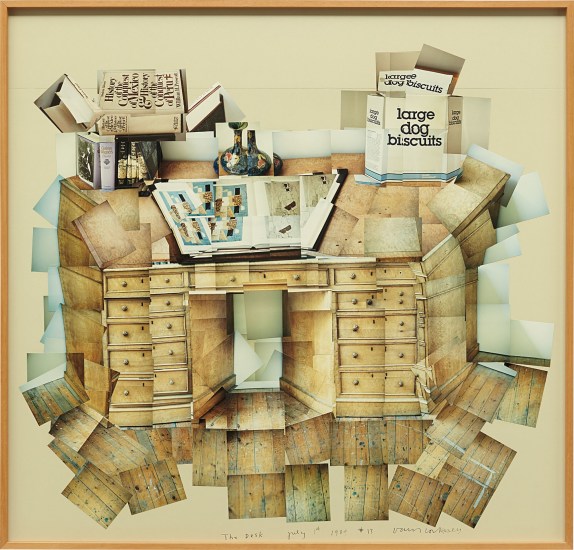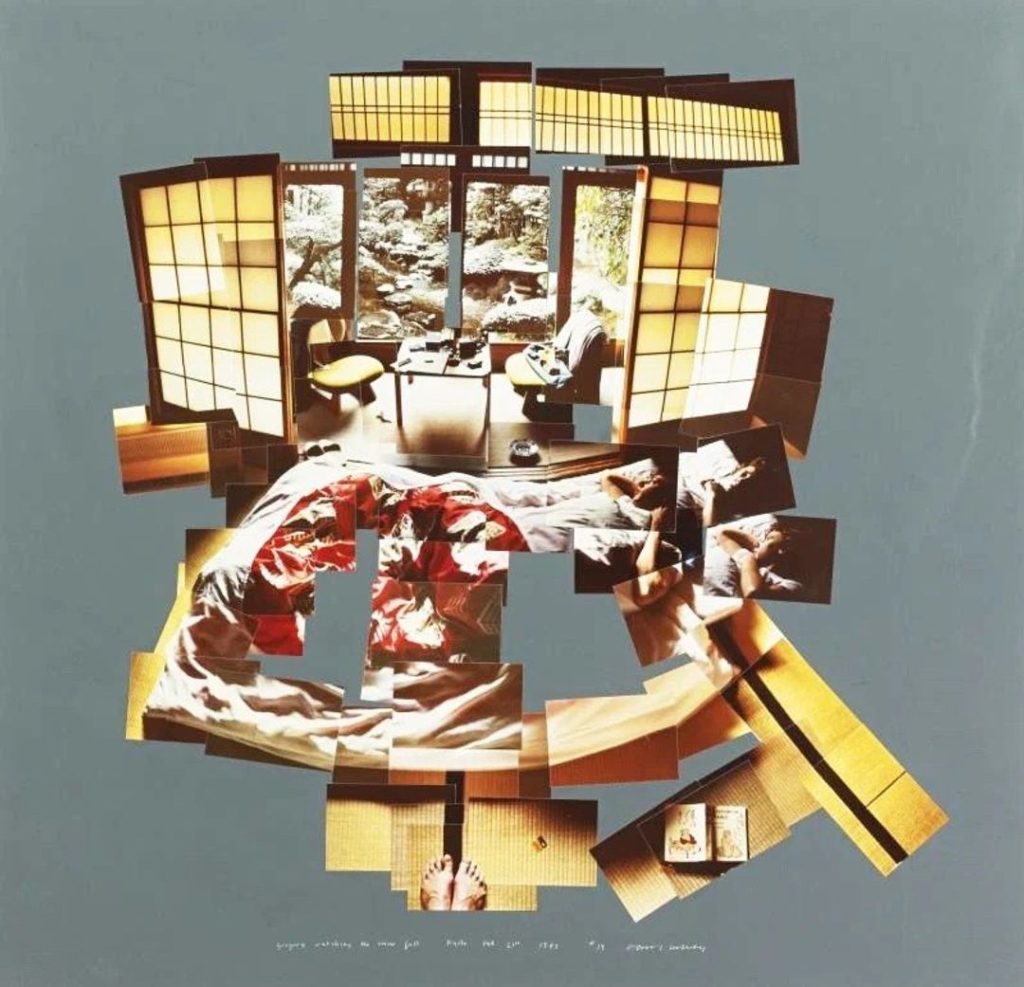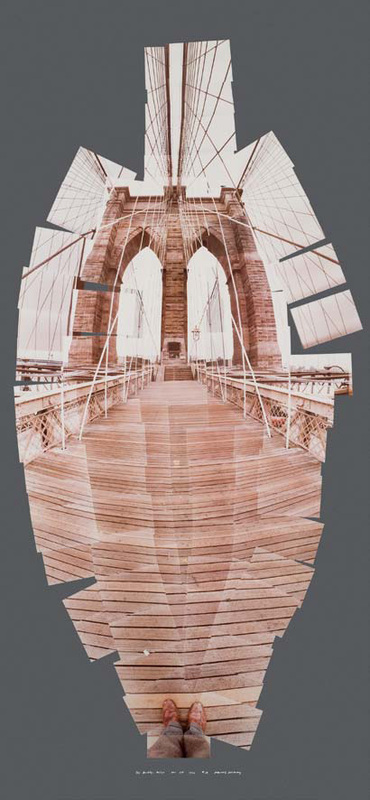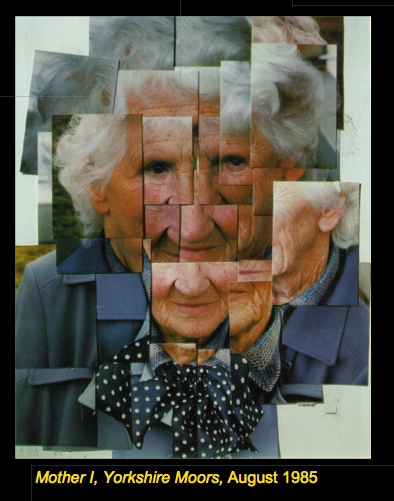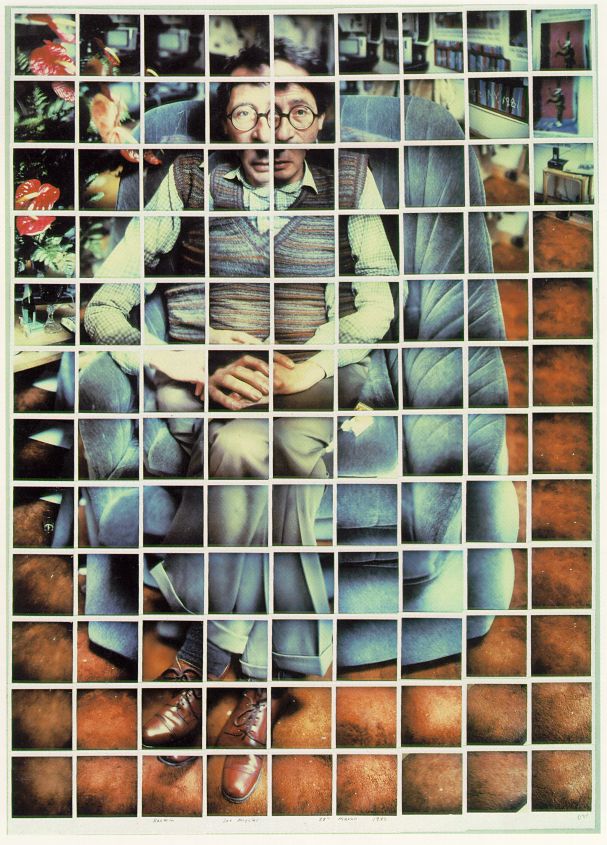David Hockney

David Hockney is an English painter, photographer and printmaker who is famously regarded as one of the most prominent English artists of the 20th century. Hockney is well known for his colourful portraits, such as Pool with two Fingers, as well as his cubism paintings, such as A Bigger Interior with Blue Terrace and Garden. In the early 1980’s, Hockney experimented with photography, specifically collages using photographs, where he coined the term ‘Joiners’ which refers to cubist-like photomontages.
Joiners
A ‘Joiner’ is a large image created from multiple photographs taken from different viewpoints and, as highlighted by Hockney, different times. These different images give the image an unorthodox, yet iconic, look by photography standards, that, because of the different viewpoints, gives the images a cubist look.
Hockney came across the ‘Joiners’ concept in accident, by taking multiple polaroid images of his living room while working on a painting and glueing them together, which he found created a narrative different to a regular photograph, which allows the viewer to ‘move’ around the image. In response to this, he says that “Photography seems to be rather good at portraiture, or can be. But, it can’t tell you about space” and returned to painting, only to revisit the concept later.
An interview with Hockney describing his Joiner process and how he came across it, as well as how he noticed how the joiners use Space, Time and Viewpoints:
Examples of his Joiners
Image Analysis
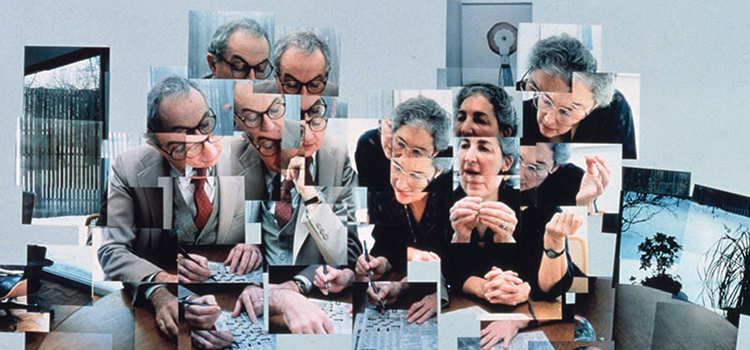
Space in the image is shown by many images, therefore it could be considered ‘distorted’ by regular standards. This distortion is similar to the ‘cubism’ movement in art in which Hockney has worked in. The flow of time is shown in this image through the implied movement of the two models in the image, with different positions representing the natural progression of time, this helps tell the story about what this image is about. This image was very clearly made by many images, thus many viewpoints also. This allows more of the surroundings to be shown in a way that implies that Hockney was also moving while he was taking the images, furthering the idea of movement captured by this image. In terms of colour, the image seems to be dominated by a mix of dull greys and blues giving the image an overall cold look, however the models in the image are significantly warmer than the rest of the image, juxtaposing those two parts of the image. To me, the lighting in the image appears to be normal room lighting, which perhaps aids the colder tones, which could have been done by Hockney to make the difference between normal (the subject matter) and abnormal (the concept of ‘Joiners’). However, it is worth noting that the tone and lighting changes slightly between each image, which helps differentiate each separate image. Shapes and line appears to contrast greatly in this image, the more natural lines formed from the models and plants clearly juxtaposes with the rigid/straight lines from the individual images that make up the joiner.

